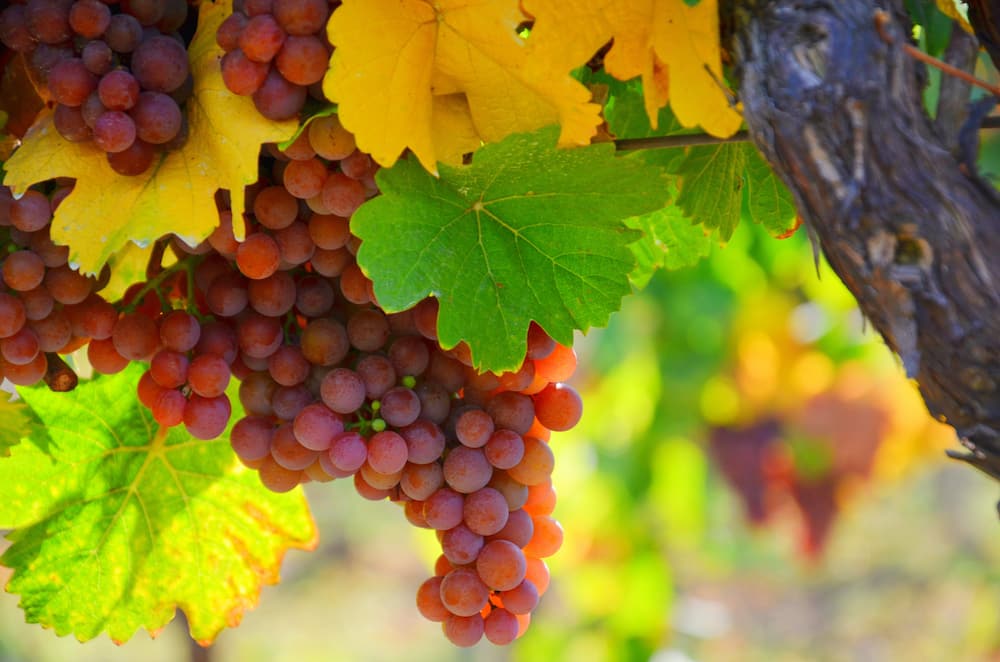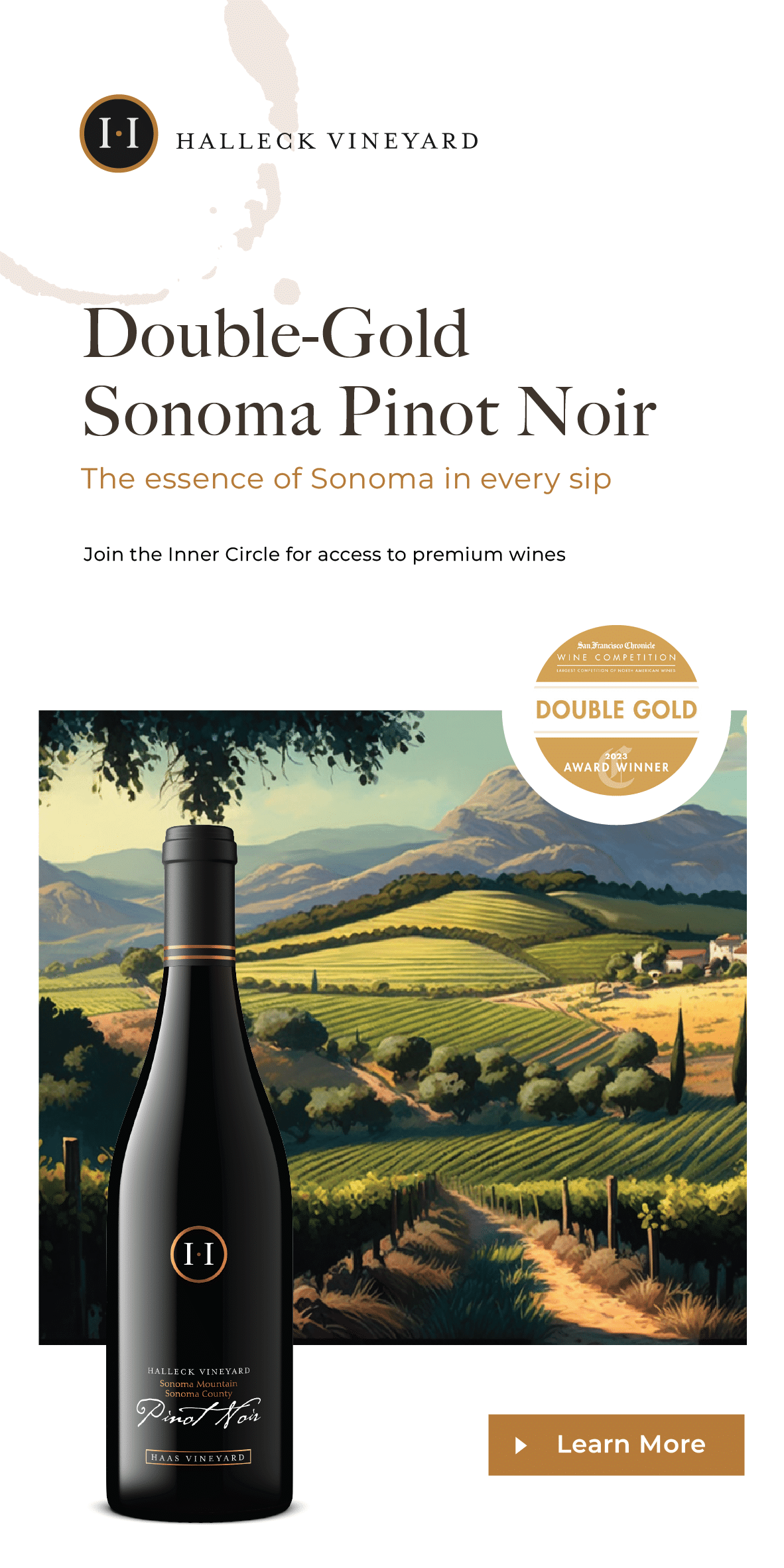Gewürztraminer Pronunciation & 15 Other Difficult Wine Words (with playable audio)


In this article, you’ll learn to say the correct Gewürztraminer pronunciation so you can order it like a native.
By the time you finish reading this blog and listening to the very best audio examples which we scoured the internet to find and chose the very best, you’ll feel like a veritable wine connoisseur, and will be confident ordering your next glass of white, red, or bubbly.
Are you ready?
The first stop is Gewürztraminer pronunciation, because Gewürztraminer pronunciation seems to be what gives new wine enthusiasts (and sometimes experienced ones) the most trouble.
Then, we’ll move on to some of the most difficult to pronounce wine varietals from around the world, so you can pop the cork with confidence.
Your Gewürztraminer pronunciation guide

Gewürztraminer pronunciation can be a bit of an enigma to the uninitiated. That’s due partly to the fact that it’s not pronounced how it looks – at least, not in English.
But we shouldn’t expect English sounds from Gewürztraminer pronunciation, because Gewürztraminer is a German word.
Therefore, the first notable difference in Gewürztraminer pronunciation is in the “w.” In German, the consonant “w” is pronounced like the English “v” in “video.”
Next, note the two dots over the “u.” This is an “umlaut,” which changes the sound of the vowel in German.
Learning how to pronounce an umlaut can be a bit tricky. In the case of Gewürztraminer pronunciation, where the umlaut is over the “u,” you can try shaping your lips as if to say the word “too.”
Instead of making an “u” sound, however, make an “i” sound with your lips in that rounded position. That is loosely the sound “ü” makes in Gewürztraminer pronunciation.
So, when you put those two German language rules together, Gewürztraminer pronunciation sounds something like: “ga-VERTZ-trah-mee-ner.”
What does Gewürztraminer mean in German?
Now that you understand how Gewürztraminer pronunciation works, it’s important to understand what that word you keep repeating means!
The name “Gewürztraminer” literally means “Spiced Traminer” in the German language.
“Spiced” because of the notes of cinnamon, allspice, ginger and pepper the wine possesses.
“Traminer” because that is the name of an ancient grape variety.
Traminer grapes, also known as Savagnin grapes, are one of the world’s oldest grape varieties. Over time, the grape mutated into a pink-skinned, aromatic, and “spicy” grape.
After all that talk about the German language, you might think that Gewürztraminer wine was from Germany. This is both true and false.
Let us explain…
Is Gewürztraminer a German wine?

Gewürztraminer grapes are very particular about their soil quality, and prefer cooler climates. They are extremely difficult to grow and, if not happy with the terroir (soil and climate) of their surroundings, will not display the beautiful aromas and fruit-forward flavors they are known for.
Germany did not make the Gewürztraminer grape happy.
So, although Gewürztraminer pronunciation is 100% German, and the very first Gewürztraminer wine was produced there, Gewürztraminer rose to fame in Alsace, France.
Alsace is a cool, dry region of France that closely borders Germany. As luck would have it, just hopping across the German border made Gewürztraminer grapes very happy indeed.
This very particular pink grape truly shines in Alsace, where the resulting wines have intoxicating aromas of sweet spices and rose petals, and luscious fruit flavors of lychee, grapefruit, and pineapple.
How to enjoy your Gewürztraminer wine

Gewürztraminer grapes love the cold, so that’s exactly how you should enjoy your wine – chilled.
Because of it’s sweet aroma, you might think it would be a sweet wine like a Moscato or Riesling. Actually, if you compare Gewürztraminer vs Riesling, you might find the former quite dry.
Because of the wine’s spiced qualities, some great Gewürztraminer pairings include spicy foods like Indian or Thai curries. But a great Gewurztraminer is perfect for Thanksgiving dinner spreads because of all the spices and herbs involved.
So now you know how to pronounce Gewürztraminer, where it is from, and how to enjoy it.
But, let’s face it, Gewürztraminer pronunciation isn’t the only thing you need to know for your next Sonoma wine tasting. Here is a pronunciation guide for wines you might wish to try.
15 hard-to-pronounce wine types explained
With this helpful pronunciation guide, there’s no need to feel intimidated by challenging wine names. Here’s how to tell your Cuvée from your Viognier – and how to pronounce them.
1. Sangiovese
You pronounce Sangiovese: “SAN-jio-VAY-zay”
What is Sangiovese?
- Sangiovese is the most popular red wine grape varietal in Italy.
- Sangiovese grapes account for 10% of all grapes planted in Italy. With over 400 wine grapes in the country, that’s a lot! There are many mutations of the grapes, which result in very different tasting wines.
- Sangiovese is the primary varietal used in Chianti wine (which we will discuss next) but it is also used in many other types of red wine.
- The wine has notes of dried cherries, figs, and roses.
2. Chianti
You pronounce Chianti: “kee-AHN-tee”
What is Chianti?
- Chianti is actually a wine region, not a type of grape. The grape used in Chianti is the Sangiovese grape mentioned above. Chianti is in Tuscany.
- To be called Chianti, a wine must be produced in the Chianti region and be made from at least 80% Sangiovese.
- Chianti wines may contain up to 20% of other grapes like Canaiolo, Colorino, Cabernet Sauvignon, and Merlot.
- The two common types of Chianti are Chianti and Chianti Classico – which is a bit higher-end.
3. Viognier
You pronounce Voignier: “vee-oh-NYAY”
What is Viognier?
- Viognier is a white wine from the south of France.
- It is full of perfumed notes of tangerine, mango, peach, honeysuckle, and vanilla.
- Chardonnay drinkers will most likely enjoy Viognier. A Viogier has a similarly full body, but is less acidic and more aromatic.
- Viognier is best enjoyed young. It doesn’t cellar well past 3 or 4 years.
4. Grenache
You pronounce Grenache: “gruh-NAASH”
What is Grenache?
- Grenache is a medium-bodied red wine that originated from Spain, where it is known as Garnacha (garr-NA-cha).
- Garnacha grapes are often used in blended wines, but single variety Grenache wines are becoming increasingly popular.
- Grenache wine has medium acidity, medium tannins, and a high alcohol content. It can be made in any style from dry to sweet.
- This wine has notes of violet flowers, cinnamon, and ripe red fruits.
5. Cabernet Sauvignon
You pronounce Cabernet Sauvignon: “ka-ber-NAY so-vin-YON”
What is Cabernet Sauvignon?
- Cabernet Sauvignon is the most popular red wine grape in North America.
- The Cabernet Sauvignon grape was born when Cabernet Franc and Sauvignon Blanc grapes crossed naturally in the 1600’s in Bordeaux, France.
- Cabernet Sauvignon wine is full-bodied with dark fruit flavors of blackberry and black currant. It’s also common to detect savory notes of black pepper, graphite, tobacco, and bell pepper.
- A Cab has bold flavor and a high tannin content, which makes it great for pairing with grilled meats and peppery sauces.
6. Merlot
You pronounce Merlot: “mer-LOW”
What is Merlot?
- Merlot, which in French means The Little Blackbird, is the second most popular red grape in America.
- Merlot is a very approachable wine, and its soft, elegant flavors make it easy to drink both with and without food.
- Merlot is medium-to full-bodied with moderate acidity and alcohol content and soft tannins.
- Tasting notes of Merlot include plum, blackberry, cherry, and chocolate.
7. Cuvée
You pronounce Cuvée: “coo-VAY”
What is Cuvée?
- Cuvée is the French word for “vat” or “tank.” It is sometimes used to imply quality or prestige.
- Cuvée can refer to two different things. It can be a champagne made from the first-pressed grape juice. But, cuvée can also refer to a still wine that is a specific blend.
- Cuvée is not a regulated term, so any winemaker can use it.
8. Sémillon
You pronounce Sémillon: “se-mi-YON”
What is Sémillon?
- Sémillon is a full-bodied French white wine. It is France’s 3rd most planted white wine variety after Sauvignon Blanc and Chardonnay.
- Sémillon is one of the grapes blended in White Bordeaux, and is the primary ingredient in Bordeaux’s dessert wines.
- Sémillon wine from cooler climates can taste of lemon, apple, pear, while warmer climate wines taste like mango, peach, and papaya.
9. Pinot Noir
You pronounce Pinot Noir: “PEE-no nWAAR”
What is Pinot Noir?
- Pinot Noir is one of the oldest grapes in the world, and hails from the Burgundy region of France.
- Pinot Noir is a lighter red wine with silky tannins and a seductive mouthfeel. Pinots are bursting with berry flavors, with undertones of earthy mushroom, allspice, and tea leaves.
- Pinot Noir grapes are some of the most difficult to grow – requiring cool climates with lots of sunshine and well-draining soil.
- Russian River Valley Pinot Noir is some of the best Pinot Noir in the world.
10. Tempranillo
You pronounce Tempranillo: “tem-pruh-NEE-yo”
What is Tempranillo?
- Tempranillo is a red wine from Spain. The name comes from the Spanish word for “early” which is “temprano.” It is so named because Tempranillo grapes ripen more quickly than other Spanish varieties.
- Tempranillo has balanced flavors of fruit and earth, with notes of cherry, tomato, and leather.
- When oak-aged, Tempranillo is often ruddy-orange in hue.
11. Rioja
You pronounce Rioja: “ri-OH-ha”
What is Rioja?
- Rioja is a red blend made in the Rioja region of Spain. Tempranillo is the primary grape in Rioja.
- Rioja is known for its complex structure and bold tannins.
- There are four styles of Rioja wine which are classified by how long the wine has been barreled. From youngest to oldest, the types are: Generic Rioja, Crianza, Reserva, and Gran Reserva.
12. Montepulciano
You pronounce Montepulciano: “mon-tay-pul-chee-AH-no”
What is Montepulciano?
- Montepulciano is the second most planted red grape in Italy after Sangiovese.
- This medium-bodied red wine has tasting notes of red plum, sour cherry, and even oregano.
- Montepulciano should not be confused with Vino Nobile di Montepulciano, which is actually made mostly from Sangiovese.
13. Moët
You pronounce Moët: “mo-ett”
What is Moët?
- Moët et Chandon, commonly referred to as simply “Moët,” is one of the world’s largest champagne producers and a prominent champagne house.
- Moët’s best known label is Dom Perignon (daum pe-ri-NYON), which is one of the most prestigious and popular champagnes worldwide.
14. Sauvignon Blanc
You pronounce Sauvignon Blanc: “so-vin-yon BLAANK”
What is Sauvignon Blanc?
- Sauvignon Blanc is a white wine from the Bordeaux region of France, where it was used in white blends and dessert wines.
- It was in New Zealand where Sauvignon Blanc found it’s fame. Some of the best and most fruity Sauvignon Blanc wines hail from Marlborough.
- Sauvignon Blanc is known for its high acidity and low sugar levels, which give it a refreshing crispness.
- A glass of Sauv Blanc can have notes of passionfruit, grapefruit, Meyer lemon, bell pepper, and gooseberry.
15. Shiraz/Syrah
This is a two-for-one! That’s because Shiraz and Syrah are the same grape.
You pronounce Shiraz & Syrah: “schuh-RAAZ” and “si-RAH”
So what’s the difference between Syrah and Shiraz?
- “Syrah” is what it’s called in France, where it is the main red wine grape in the Northern Rhône Valley. “Shiraz” is what winemakers in Australia call it.
- While they are really the same thing, the two different names have sometimes come to refer to the distinct winemaking styles of each region.
- A “Shiraz” is sometimes more lush and fruit-forward, while a “Syrah” might be more restrained and floral.
- Shiraz/Syrah is a full-bodied wine with notes of blueberry and blackberry, as well as an interesting combination of licorice, black pepper, and smoked meats.
Get out there and order wine like a native!
You now know everything you need to know about Viognier, Montepulciano, and Gewürztraminer pronunciation. You’re all set to order wine like a pro at your next Sonoma wine tasting.
And, if you need a little help with more than just pronunciation, we’ve got some life-saving wine tasting tips as well.





